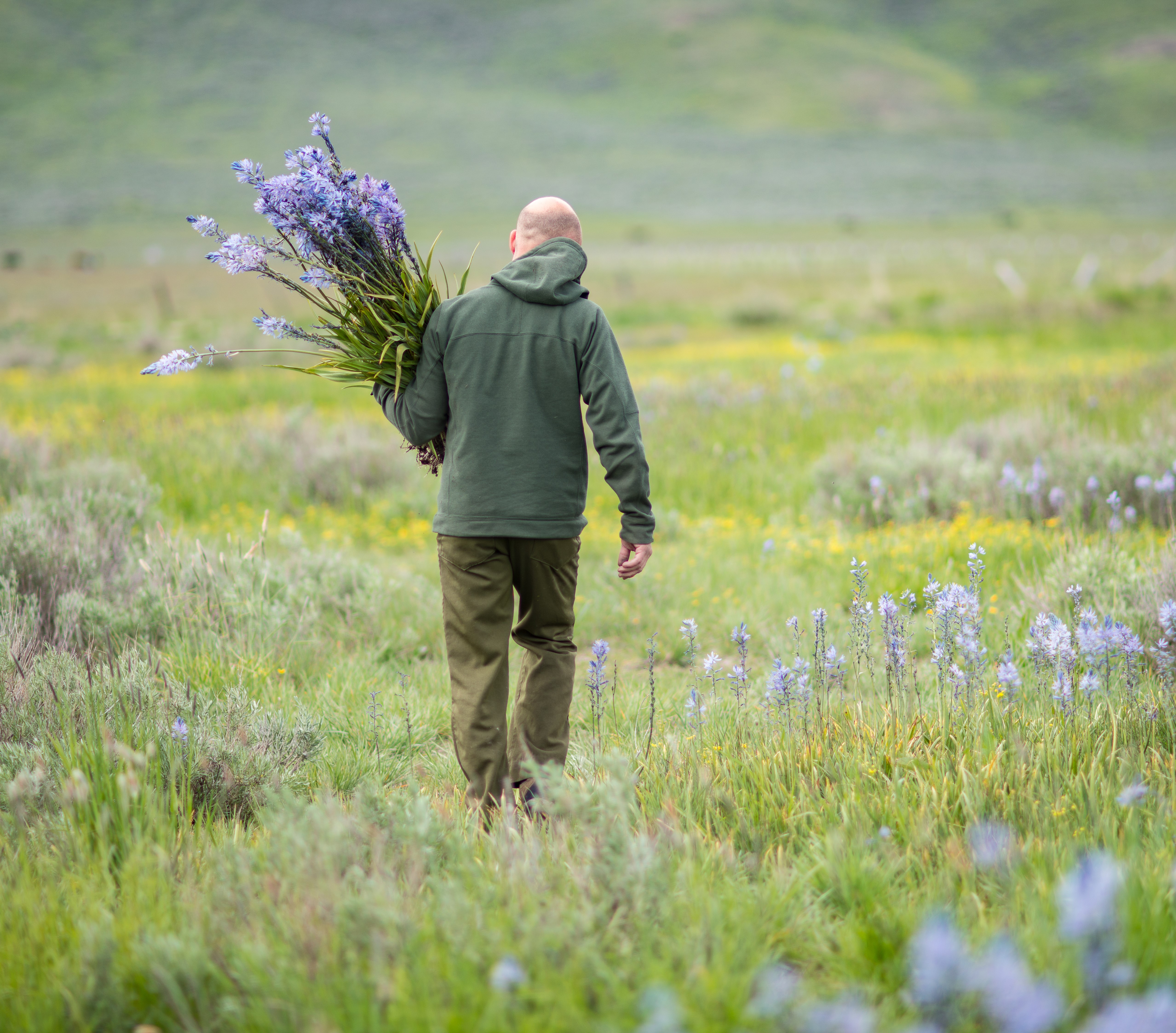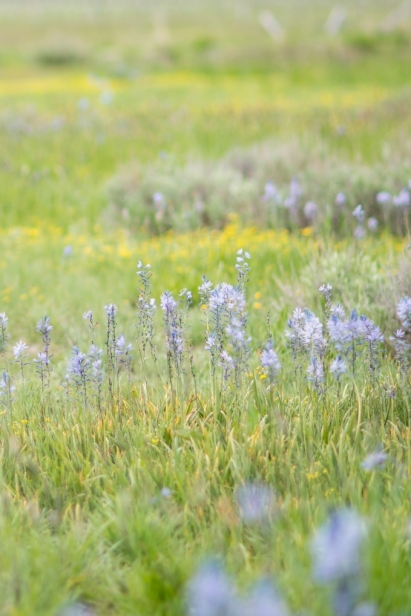THE ROOTS OF CAMAS: Tribal origins and sweet sustenance
For most of my life, the blue fields of the camas prairie near Mountain Home struck me as simply something pretty to look at while driving to Sun Valley to catch trout. I could imagine the area without cattle and without crops: the blue would have seemed endless.
The older I got the more I wanted to know about the plants around me, especially the culturally important ones like camas. so I decided to get digging.
Camas can be found across a wide swath of the western United States. It tends to congregate in flat areas with high moisture and in the spring, its flowers are unmistakable. In northwestern Native American cultures camas root holds a special place in the food system. So special that it is even a part of the Nez Perce cultural origin story. According to one telling of “Heart of the Monster,” the coyote that rescues the Nez Perce people left behind camas “so that the people could find them and be glad.”
Several tribes in Idaho utilized the bounty of camas. The Nez Perce in northern Idaho and the Bannock-Shoshone of southwestern Idaho both have a traditional location known as the “camas prairie.” in northern Idaho, an area near Grangeville was a vital food source for the local Nez Perce tribes. Outside Mountain Home, another area was an equally important food source for the Bannock tribe. Access to both these areas, or lack thereof, was one of the seminal factors in both the 1863 Nez Perce reservation break-out and the Bannock Wars of 1877. Battles were fought and people died for camas fields.
The more I learned the more I completely agreed with fellow Idahoan, professional forager and naturalist Chris Florence when he said, “It seemed like a travesty that [camas] became almost unknown to modern cultures.” If I was to consider myself an idahoan, I needed to know more about camas.
The green stalk of a camas plant resembles a leek in many ways. Most foragers harvest them exclusively in the spring when the purple flower is visible—insurance against accidentally harvesting the wrong plant. When dug up, camas root looks like a small white onion and an range from the size of a dime to as big as a silver dollar.
Traditionally, camas was dug with an elk horn digging stick. Fresh out of digging sticks I opted for a shovel: I was not alone. “We’ve tried all sorts of digging tools and it really depends on the soil, specifically the moisture content, to determine the best tool,” said Florence. “Camas fields used to be cultivated yearly and I’m sure camas was much easier to dig back then, before ranching and farming led to so much compaction. I think the most effective method is a shovel.”
So I found myself on a patch of camas one spring afternoon near Cascade. I followed the foragers’ rule of making sure harvesting is allowed on that land and then never taking any more than 25% of the patch I was on. This still left me with several pounds of camas after only an hour of digging. My inner chef was doing cartwheels. But I had also spoken with Hank Shaw, James beard award–winning blogger and cookbook author (Hunt, Gather, Cook: Finding the Forgotten Feast), about camas. He had a bit of a warning.
According to Shaw, camas roots have an indigestible sugar in them called inulin, which can cause “a mighty wind,” so to speak. It can even cause more severe gastric distress. Lewis and Clark reported that eating the root left “nearly all the men sick.” The way to avoid this is to cook the bulbs for an extended period of time, causing the inulin sugars to convert to fructose, a digestible sugar.
Historically, camas root was cooked in an earthen oven for several days. slow cooking causes the sugars to caramelize, turning them nearly black. Darcy Williamson, a McCall-based natural foods expert, said children of the Nez Perce and Bannock-Shoshone tribes loved it when the camas was baked because the natural sugars would ooze out of the earthen ovens in the form of a sticky caramel. The children loved using small twigs to make an ancient form of candy, much like a modern-day sucker.
With my batch of camas, I used the traditional french method of confit: the slow poaching of food in oil to slightly caramelize it to allow for preservation. I would add mine to simple salad dishes of foraged greens and light vinaigrettes. The sweetness of the camas balanced the
dishes out very well.
Chris florence added, “The simplest way that I have cooked them was to simply smash the bulb flat and crisp them in hot bear fat, then add a huckleberry syrup.” Yum.
But be cautious when gathering the root for the first time. While the flower is nearly unmistakable, the camas roots themselves can look an awful lot like the aptly named “death camas.”
To that point, Florence offered this advice: “first-time camas pickers? I’d say the same thing I tell first-time mushroom pickers: Go with someone who knows.”








